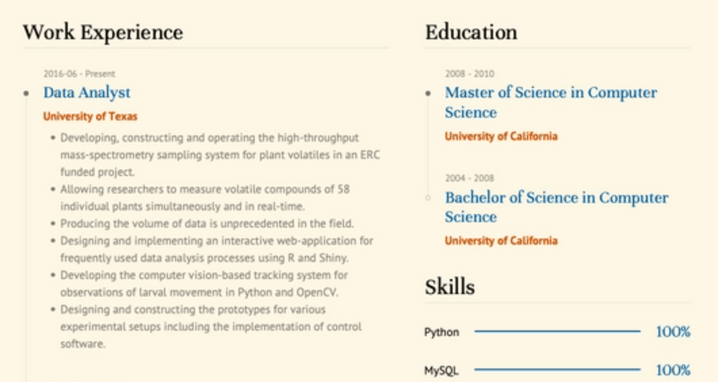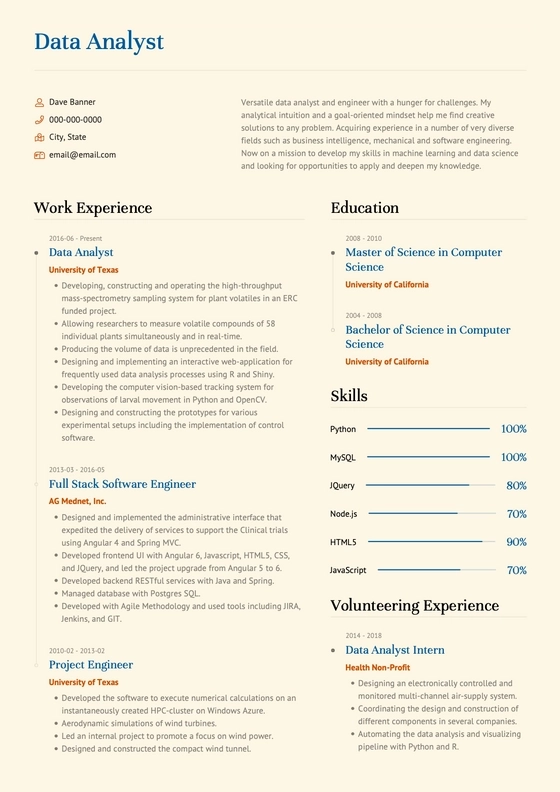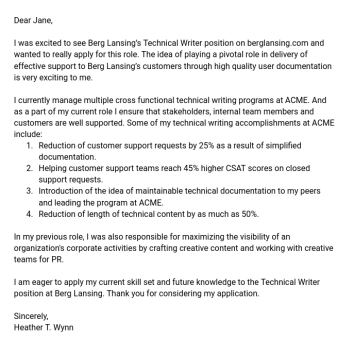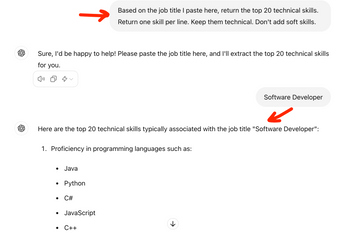
How to Write a Modern Resume: Expert Tips & Best Practices

Writing a modern resume can be tough. Many people have trouble picking the right format, showing their best skills, and making sure computers can read their resume. These challenges can make the process stressful. But don’t worry! We will show you everything you need to know to make a great modern resume. This guide will help you choose the right template, organize each section, and make your resume easy to read and professional.
Knowing how to write a modern resume is crucial in today’s job market. A modern resume not only highlights your skills and experiences but also makes sure your application stands out. We will guide you through each step, from choosing the right design to tailoring your resume for specific jobs. By the end, you’ll have a resume that is both eye-catching and effective.
What is a Modern Resume?
A modern resume is a professional document that effectively showcases a job seeker's skills, experience, and achievements in a concise and visually appealing format. It typically includes a summary, work experience, education, and skills, using clean designs and bullet points for readability. Modern resumes also incorporate optimized keywords to pass through Applicant Tracking Systems (ATS).
Beyond the basic structure, a modern resume embraces technology and digital tools. Applicants often create digital versions that can be shared online, include links to professional profiles like LinkedIn, or even incorporate QR codes for easy access to portfolios or work samples. This approach reflects the candidate's familiarity with current trends and makes it easier for employers to evaluate their credentials quickly.
In an era where first impressions are increasingly made online, a modern resume serves as a crucial tool in presenting oneself professionally and effectively to potential employers.
Now that we understand what a modern resume is, let's explore how to write one effectively.
Modern Resume Example

How to Write a Modern Resume
Writing a modern resume involves several key steps to ensure it is both effective and visually appealing. Here’s how to craft each section:
- Choose the Right Template: Start with a clean, professional template that is easy to read. Avoid overly complex designs; instead, opt for a layout that highlights your information clearly.
- Create a Strong Summary: Write a concise summary at the top of your resume. This should be 2-3 sentences long and focus on your most impressive qualifications and career goals.
- Detail Your Work Experience: List your work experience in reverse chronological order. For each job, include your title, the company name, dates of employment, and bullet points highlighting your key responsibilities and achievements. Use action verbs and quantify your accomplishments when possible.
- Highlight Education: Include your educational background, starting with the most recent degree. Mention the institution, degree obtained, and graduation date. If you have relevant coursework or honors, list them.
- Showcase Skills: Create a skills section that highlights your relevant hard and soft skills. Be specific and tailor this section to match the job description, using keywords that are likely to be picked up by ATS.
- Include Additional Sections: Depending on your background, you might include sections for certifications, volunteer work, or professional memberships. These can provide a fuller picture of your qualifications.
- Optimize for ATS: Use keywords from the job description throughout your resume. Avoid using images or graphics that ATS might not be able to read. Stick to standard fonts and clear, straightforward formatting.
- Use the Right Colors: Choose a professional color scheme. Typically, one or two subtle colors can make your resume stand out without being distracting.
- Proofread Carefully: Ensure there are no spelling or grammatical errors. A clean, error-free resume demonstrates attention to detail and professionalism.
How to Use AI to Write a Modern Resume
Using AI to write a modern resume can streamline your job application process and ensure a polished, professional result. AI tools analyze job descriptions and industry standards to suggest relevant keywords, optimal phrasing, and effective formatting. Simply input your work history, education, skills, and achievements, and the AI will generate a tailored resume draft. This approach saves time and increases your chances of standing out to potential employers.
By following these steps, you can create a modern resume that effectively highlights your qualifications and makes a strong impression on potential employers.
Next, let’s delve into the differences between modern and traditional resumes, and how to choose the best format for your job search.
Modern vs Traditional Resume
Understanding the differences between a modern and traditional resume can help you choose the best format for your job search.
- Design and Layout: Traditional resumes typically have a simple, text-heavy layout, often in black and white. Modern resumes feature clean, visually appealing designs with strategic use of color and formatting to enhance readability.
- Content Presentation: Traditional resumes focus on detailed job descriptions and list work experience in chronological order. Modern resumes emphasize skills and achievements, using bullet points and concise statements to highlight key information.
- Objective vs. Summary: Traditional resumes often start with a career objective. Modern resumes usually begin with a professional summary or personal branding statement that succinctly outlines the candidate's qualifications and career goals.
- Technology Integration: Traditional resumes are primarily paper-based and not optimized for digital use. Modern resumes include hyperlinks to online profiles or portfolios, QR codes, and are formatted to be compatible with Applicant Tracking Systems (ATS).
- Skills and Keywords: Traditional resumes list skills in a general manner without much emphasis on relevance to specific job descriptions. Modern resumes integrate keywords from job postings to enhance ATS compatibility and relevance.
- Personal Branding: Traditional resumes have a limited focus on personal branding. Modern resumes highlight personal branding through tailored summaries, design elements, and the inclusion of personal or professional websites.
- Length and Detail: Traditional resumes tend to be longer, with more detailed descriptions of each role. Modern resumes are concise, focusing on key achievements and relevant experiences to keep the document brief and impactful.
Choosing the right resume style depends on the industry, job role, and personal preferences. A modern resume can be more effective in tech-savvy and creative fields, while a traditional resume might be preferred in more conservative industries.
Next, let's focus on ensuring your contact information is clear and professional, which is essential for a modern resume.
Contact Information for a Modern Resume
Ensuring your contact information is clear and professional is essential for a modern resume.
- Full Name: Use your full name at the top of the resume, making it prominent and easy to read.
- Phone Number: Include a reliable phone number where you can be reached. Make sure your voicemail message is professional.
- Email Address: Provide a professional email address, ideally your first and last name. Avoid using outdated or inappropriate email addresses.
- LinkedIn Profile: Add a link to your LinkedIn profile. Ensure your profile is up-to-date and aligns with the information on your resume.
- Personal Website or Portfolio: If applicable, include a link to your personal website or online portfolio to showcase your work.
- Address: It's optional to include your full address. Many modern resumes now only list the city and state to maintain privacy and relevance.
- Social Media Links: Only include social media links if they are professional and relevant to the job you are applying for.
Best Practices for Presenting Contact Information on a Modern Resume
1. Formatting Your Contact Information
Place your contact details at the top, either centered or aligned to the left. Use a clean, readable font, and bold your name. Separate information with bullet points or vertical bars for clarity.
2. Ensuring Consistency Across Platforms
Make sure your resume matches your LinkedIn profile, personal website, and other professional platforms. Consistent information reinforces your professional image and helps employers verify your credentials.
3. Privacy Considerations
Avoid including sensitive personal information like your full address or birthdate. Listing just your city and state is usually enough. Ensure your contact details maintain your privacy and professionalism.
4. Using Professional Voicemail and Email
Ensure your voicemail message is professional, clear, and concise. Use a professional email address, and if needed, create a new account specifically for job applications.
5. International Job Applications
Include the appropriate country code with your phone number. Be mindful of time zones and mention your availability. Adapt your resume formatting to the preferences of the country you’re applying to.
6. QR Codes and Digital Contact Information
Incorporate QR codes for quick access to your LinkedIn profile or portfolio. Ensure the QR code works and directs to an updated, professional online presence.
7. Optimizing Contact Information for Modern Resumes
To optimize contact information for modern resumes, focus on clarity, professionalism, and digital integration. Present your contact details prominently and ensure they are consistent across all platforms. Use modern tools like QR codes for easy access to additional information, and maintain privacy by avoiding unnecessary personal details. This approach enhances your professional image and makes it easier for employers to reach you.
Let’s now see how to write individual sections of a modern resume, starting with crafting a compelling professional summary.
Crafting a Professional Summary for a Modern Resume
- Keep it concise: Aim for 3-5 sentences summarizing your most relevant skills and experiences.
- Highlight your strengths: Focus on your top skills and achievements that align with the job you're applying for.
- Tailor it to the job: Customize your summary to match the job description and emphasize your suitability for the role.
- Use strong action verbs: Start your sentences with powerful verbs to make your summary more dynamic.
- Include quantifiable achievements: Whenever possible, mention specific accomplishments and metrics to demonstrate your impact.
- Show your career progression: Indicate your career growth and how your past roles have prepared you for the current opportunity.
- Maintain a professional tone: Keep your language formal and avoid casual phrases or jargon.
Good Example of a Professional Summary for a Modern Resume
Dynamic and results-driven marketing professional with over five years of experience in digital marketing, content creation, and social media strategy. Proven track record of increasing online engagement by 40% and boosting conversion rates by 25% through targeted campaigns. Adept at leveraging data analytics to inform decision-making and drive marketing success. Seeking to apply my expertise to the Marketing Manager role at JTwenty Inc., to further enhance brand presence and drive revenue growth.
Bad Example of a Professional Summary for a Modern Resume
Hi! I'm a marketing person with a few years of experience. I’ve done social media stuff and made some cool posts that got a lot of likes. I know how to use Facebook and Instagram and want to work at JTwenty Inc., to help with their marketing.
Next, let's focus on effectively highlighting key skills in your resume to make a strong impression on potential employers.
Highlighting Key Skills in a Modern Resume
- Identify relevant skills: Focus on skills that are directly related to the job you're applying for.
- Use a mix of hard and soft skills: Combine technical abilities with interpersonal skills to showcase a well-rounded profile.
- Be specific: Avoid vague terms and clearly define each skill.
- Organize logically: Group similar skills together and use bullet points for easy readability.
- Include keywords: Incorporate terms from the job description to pass through Applicant Tracking Systems (ATS).
- Provide context when possible: Mention where and how you applied the skills in your previous roles.
- Keep it concise: Limit the list to the most critical skills, typically around 6-10 items.
Good Example of How to Write Your Modern Resume’s Skill Section
- Project Management: Successfully led multiple projects from inception to completion, delivering on time and within budget.
- Data Analysis: Proficient in using Excel and SQL to analyze data trends and provide actionable insights.
- Communication: Excellent written and verbal communication skills, with experience presenting to stakeholders and clients.
- Team Leadership: Demonstrated ability to manage and motivate teams, fostering a collaborative work environment.
- Customer Service: Strong background in resolving customer issues and improving customer satisfaction rates.
- Technical Proficiency: Advanced knowledge of Microsoft Office Suite, Adobe Creative Cloud, and CRM software.
Bad Example of How to Write Your Modern Resume’s Skill Section
- Good at projects
- Excel
- Talking to people
- Leading teams
- Customer stuff
- Microsoft Office
Next, let's see how to structure your work experience to highlight your career progress and achievements effectively.
Structuring Work Experience in a Modern Resume
- Start with your most recent job: List your work experiences in reverse chronological order.
- Include essential details: For each job, mention the job title, company name, location, and dates of employment.
- Use bullet points for responsibilities and achievements: Clearly outline your key duties and accomplishments in each role.
- Focus on achievements: Highlight your successes and contributions, using quantifiable metrics where possible.
- Tailor to the job description: Emphasize experiences and skills that are most relevant to the job you are applying for.
- Use action verbs: Begin each bullet point with a strong action verb to create a dynamic narrative.
- Keep it concise: Aim for 3-5 bullet points per job to maintain readability and impact.
Good Example of Structuring Work Experience on a Modern Resume
Marketing Manager JTwenty Inc., New York, NY January 2018 – Present
- Led a team of 10 in developing and executing digital marketing strategies, resulting in a 30% increase in online sales.
- Managed a $500K annual marketing budget, optimizing spend to achieve a 20% reduction in costs while improving campaign effectiveness.
- Implemented a data-driven approach to content creation, increasing website traffic by 45% and social media engagement by 50%.
- Collaborated with cross-functional teams to launch new product lines, contributing to a 15% growth in market share.
- Spearheaded a customer retention program that boosted repeat purchase rates by 25%.
Bad Example of Structuring Work Experience on a Modern Resume
Marketing JTwenty Inc., New York, NY 2018 – Now
- Did digital marketing stuff and managed a team.
- Handled the marketing budget.
- Made content and worked with other teams.
- Launched products.
- Worked on customer retention.
Now, let's focus on how to present your educational background clearly and concisely.
Educational Background in a Modern Resume
- List in reverse chronological order: Start with your most recent or highest degree first.
- Include essential details: Mention the degree obtained, the institution name, location, and dates of attendance or graduation.
- Highlight relevant coursework or projects: If applicable, list courses or projects that are directly related to the job you're applying for.
- Include honors or awards: Note any academic honors, scholarships, or special recognitions.
- Keep it concise: Provide enough detail to inform but keep it brief and focused on relevance.
- Mention GPA (optional): If your GPA is strong (typically above 3.5), you may choose to include it.
Good Example of How to Write Your Education Section in a Modern Resume
Master of Business Administration (MBA) Harvard Business School, Boston, MA Graduated: May 2020
- Relevant Coursework: Strategic Management, Marketing Analytics, Financial Accounting
- Honors: Dean’s List, Recipient of the Leadership Scholarship
- GPA: 3.8/4.0
Bachelor of Science in Computer Science University of California, Berkeley, CA Graduated: May 2016
- Relevant Coursework: Algorithms, Data Structures, Machine Learning, Database Systems
- Projects: Developed a machine learning algorithm to predict stock market trends as part of the senior capstone project
- Honors: Cum Laude, Member of the Computer Science Honor Society
Bad Example of How to Write Your Education Section in a Modern Resume
MBA Harvard 2020
- Took management and marketing classes
- Got a scholarship
Bachelor's Degree UC Berkeley 2016
- Studied computer science stuff
- Did a project on machine learning
Now, let's explore additional sections you can include in your modern resume to provide a comprehensive view of your qualifications.
Additional Sections in a Modern Resume
- Certifications: List relevant certifications, including the issuing organization and the date obtained.
- Volunteer Experience: Highlight volunteer work that demonstrates relevant skills and a commitment to the community.
- Professional Affiliations: Include memberships in professional organizations that are pertinent to your field.
- Languages: Indicate languages spoken and proficiency levels.
- Technical Skills: Detail specific technical competencies, such as software, tools, and technologies.
- Publications: Mention any relevant articles, books, or papers you have authored or co-authored.
- Projects: Describe significant projects that showcase your skills and achievements, including context and outcomes.
- Awards and Honors: List any awards or recognitions received, providing context for their significance.
- Hobbies and Interests: Include if they are relevant to the job or demonstrate desirable qualities.
- Professional Development: Detail any additional training, workshops, or seminars attended that are relevant to your career.
Now, let's discuss some tips for formatting and designing a modern resume to make it both visually appealing and effective.
Modern Resume Formatting and Design Tips
- Keep it clean and simple: Use a minimalist design with plenty of white space.
- Use professional fonts: Stick to standard, easy-to-read fonts like Arial, Calibri, or Times New Roman.
- Maintain consistent formatting: Ensure uniformity in font sizes, bullet points, and heading styles.
- Limit the length: Aim for a one-page resume if you have less than 10 years of experience; otherwise, two pages are acceptable.
- Prioritize readability: Use clear section headings, bullet points, and short paragraphs.
- Include contact information at the top: Ensure your name, phone number, email, and LinkedIn profile are easily accessible.
- Use bold and italics sparingly: Highlight key points without overusing these features.
- Optimize for ATS: Avoid images, charts, and tables that can confuse Applicant Tracking Systems.
- Use consistent margins: Set uniform margins on all sides of the document.
- Proofread carefully: Check for typos, grammatical errors, and formatting inconsistencies.
Next, let's weigh the benefits and drawbacks of using a modern resume format to understand its impact on your job application process.
Pros and Cons of Using a Modern Resume
Pros of Using a Modern Resume
Utilizing a modern resume format provides numerous advantages that can significantly improve your job application process:
- Enhances readability: A clear and concise format ensures that recruiters can quickly and easily scan your resume for relevant information.
- Highlights key skills: Modern resumes effectively showcase your most pertinent skills and abilities, making them stand out to potential employers.
- Professional appearance: A clean and polished design creates a strong and positive first impression, demonstrating your attention to detail.
- ATS-friendly: Optimized for Applicant Tracking Systems, modern resumes improve your chances of passing the initial electronic screening process.
- Tailored content: The format allows for easy customization to align your resume with specific job descriptions and requirements.
- Demonstrates modernity: Shows that you are current with job market trends and understand the expectations of today's employers.
- Emphasizes achievements: Focuses on quantifiable results and successes, providing concrete evidence of your capabilities.
- Improves organization: A structured layout helps present your information logically and coherently, making it easier for recruiters to follow.
- Boosts engagement: Engages recruiters with dynamic and relevant content that holds their attention.
- Supports branding: A consistent and professional format reinforces your personal brand, helping you stand out in a competitive job market.
Cons of Using a Modern Resume
While a modern resume format offers many benefits, there are some potential drawbacks to consider:
- May require frequent updates: To stay relevant with changing trends and job market demands, a modern resume often needs regular updates and revisions.
- Risk of over-formatting: Excessive design elements or creativity can sometimes detract from the content, making it harder for recruiters to find important information.
- Potential ATS issues: Despite being optimized, certain design features might still confuse Applicant Tracking Systems, potentially leading to your resume being overlooked.
- Time-consuming to create: Crafting a well-designed, modern resume can take more time and effort compared to a traditional resume format.
- Needs customization for each job: To be most effective, a modern resume should be tailored to each specific job application, which can be labor-intensive.
- Possible lack of substance: Focusing too much on style over substance might result in a visually appealing resume that lacks sufficient detail about your skills and experience.
- Can be perceived as less serious: Some employers or industries might view a highly modern resume as unprofessional or less serious.
- Requires design skills: Creating an aesthetically pleasing modern resume might require some design skills or familiarity with resume-building tools.
- May not suit all industries: Certain traditional or conservative fields might prefer classic resume formats over modern ones.
- Risk of distraction: Eye-catching elements and creative layouts could potentially distract recruiters from the actual content of your resume.
How to Select the Right Modern Resume Template
Choosing the right modern resume template is crucial for making a strong impression and effectively showcasing your qualifications:
- Align with industry standards: Ensure the template fits the norms and expectations of your specific industry or field.
- Prioritize readability: Select a template that presents information clearly, with a clean layout and plenty of white space.
- Check ATS compatibility: Verify that the template is optimized for Applicant Tracking Systems, avoiding complex formatting that could cause issues.
- Consider your experience level: Choose a template that accommodates the amount of experience you have, providing sufficient space for details without overcrowding.
- Match your personal brand: The design should reflect your personal style and professional brand, enhancing your overall presentation.
- Focus on functionality: Ensure that the template effectively organizes your information, making it easy for recruiters to find key details.
- Adaptability: Look for a template that can be easily customized to tailor your resume to different job applications.
- Professional appearance: Opt for a design that looks polished and professional, avoiding overly flashy or distracting elements.
- Include sections for key information: Ensure the template has dedicated sections for essential details such as contact information, professional summary, work experience, education, and skills.
- Test print and digital formats: Verify that the template looks good both in print and on screen, maintaining its readability and professional appearance in all formats.
- What is a Modern Resume?
- Modern Resume Example
- How to Write a Modern Resume
- Modern vs Traditional Resume
- Contact Information for a Modern Resume
- Crafting a Professional Summary for a Modern Resume
- Highlighting Key Skills in a Modern Resume
- Structuring Work Experience in a Modern Resume
- Educational Background in a Modern Resume
- Additional Sections in a Modern Resume
- Modern Resume Formatting and Design Tips
- Pros and Cons of Using a Modern Resume
- How to Select the Right Modern Resume Template

Written By
Madison Norton
VP Marketing & Resume Expert
Madison is the VP Marketing and General Manager at VisualCV. He's a seasoned marketing leader, resume writing and career marketing expert and now helping people grow their own career marketing strategies to build a career they love.

Learn how to write a compelling cover letter with ChatGPT. Explore 20+ prompt examples to customize your cover letter for any job application. Enhance your chances with tailored, professional cover letter prompts and tips inside.
July 19, 2024
Read Post

VP Marketing & Resume Expert

Resume formatting tips and examples for all jobs and experience levels. Learn how to best format your resume and land that dream job in 2025!
February 4, 2025
Read Post

VP Marketing & Resume Expert


VP Marketing & Resume Expert
Copyright ©2025 Workstory Inc.